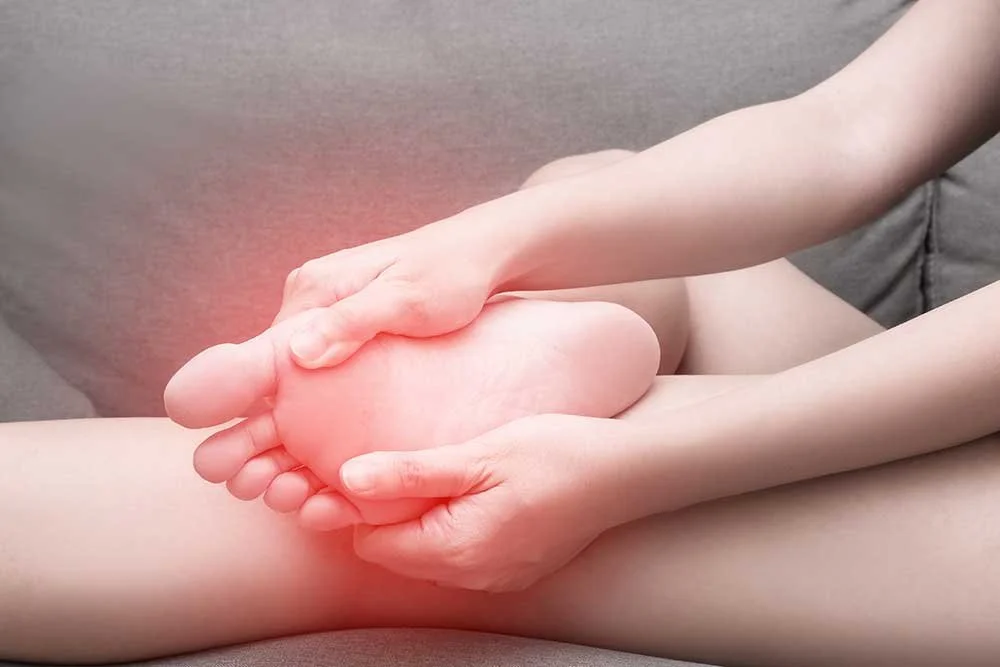Preventing Sesamoiditis: Tips for Athletes and Active Individuals
Sesamoiditis is a painful condition that affects the small bones beneath the big toe joint, known as the sesamoids. While this injury can impact anyone, it is particularly common in runners, dancers, and other active individuals. Dr. John Paul Elton, a board-certified foot and ankle surgeon at Vail-Summit Orthopaedics & Neurosurgery, shares expert guidance on how to avoid this frustrating issue and what to do if sesamoid pain starts to develop.
What Is Sesamoiditis?
The sesamoid bones are two small, pea-shaped structures embedded in the tendons just below the ball of the foot, where they help absorb impact and enhance mobility. Repetitive impact, improper footwear, or a sudden increase in training intensity can irritate these bones, leading to inflammation known as sesamoiditis. This condition often results in persistent sesamoid pain, especially when pushing off the toes.
"Patients often describe the pain as a dull ache that gets worse with activity," explains Dr. Elton. "It can make even simple movements like walking or climbing stairs uncomfortable."
Sesamoiditis Foot Treatment: Prevention Comes First
The best sesamoiditis foot treatment is prevention. Athletes and active individuals can reduce their risk by paying attention to biomechanics and modifying certain training habits:
Choose the right shoes: Footwear should have adequate cushioning in the forefoot and a stiff sole to reduce pressure on the ball of the foot.
Train smart: Avoid sudden increases in activity, especially high-impact workouts. Cross-training can also help distribute load more evenly across the feet.
Strengthen and stretch: Keeping your calves, arches, and toes strong and flexible can improve foot mechanics and reduce strain.
Use orthotics if needed: Custom or over-the-counter inserts can provide offloading support for the sesamoid bones.
"Supportive shoes and proper training can go a long way in preventing this condition," says Dr. Elton. "We always want to keep athletes on their feet and doing what they love."
Recognizing the Early Signs of Sesamoid Pain
Sesamoiditis often starts gradually, and the symptoms can be easy to dismiss. Warning signs include:
Pain under the big toe joint
Swelling or bruising in the ball of the foot
Difficulty bending or straightening the big toe
If you notice sesamoid pain that worsens with activity, it’s time to take action. Ignoring the issue can result in more serious injuries like stress fractures of the sesamoid bones.
When to Seek Sesamoiditis Treatment
If rest and home care aren’t helping, it may be time to see a foot and ankle specialist. Dr. Elton offers comprehensive evaluations and advanced sesamoiditis treatment options to help patients recover and stay active. Treatment plans typically begin conservatively with rest, activity modification, and offloading. In more persistent cases, imaging such as X-rays or MRIs may be used to rule out fractures or other causes of sesamoid pain.
"The earlier we can start a treatment plan, the better the outcomes," notes Dr. Elton. "Effective sesamoiditis foot treatment helps prevent chronic problems and keeps patients moving confidently."
Get Back to Doing What You Love
If you’re experiencing persistent pain or swelling near the ball of your foot, don’t wait. Prompt sesamoiditis treatment can make all the difference. Dr. Elton and his team are here to help you return to the activities you enjoy with expert care tailored to your goals.
Whether you're dealing with new symptoms or want to avoid sesamoiditis altogether, prioritizing foot health is key. With the right strategies and guidance, you can keep your feet strong and pain-free. Contact Dr. Elton and his team today.
